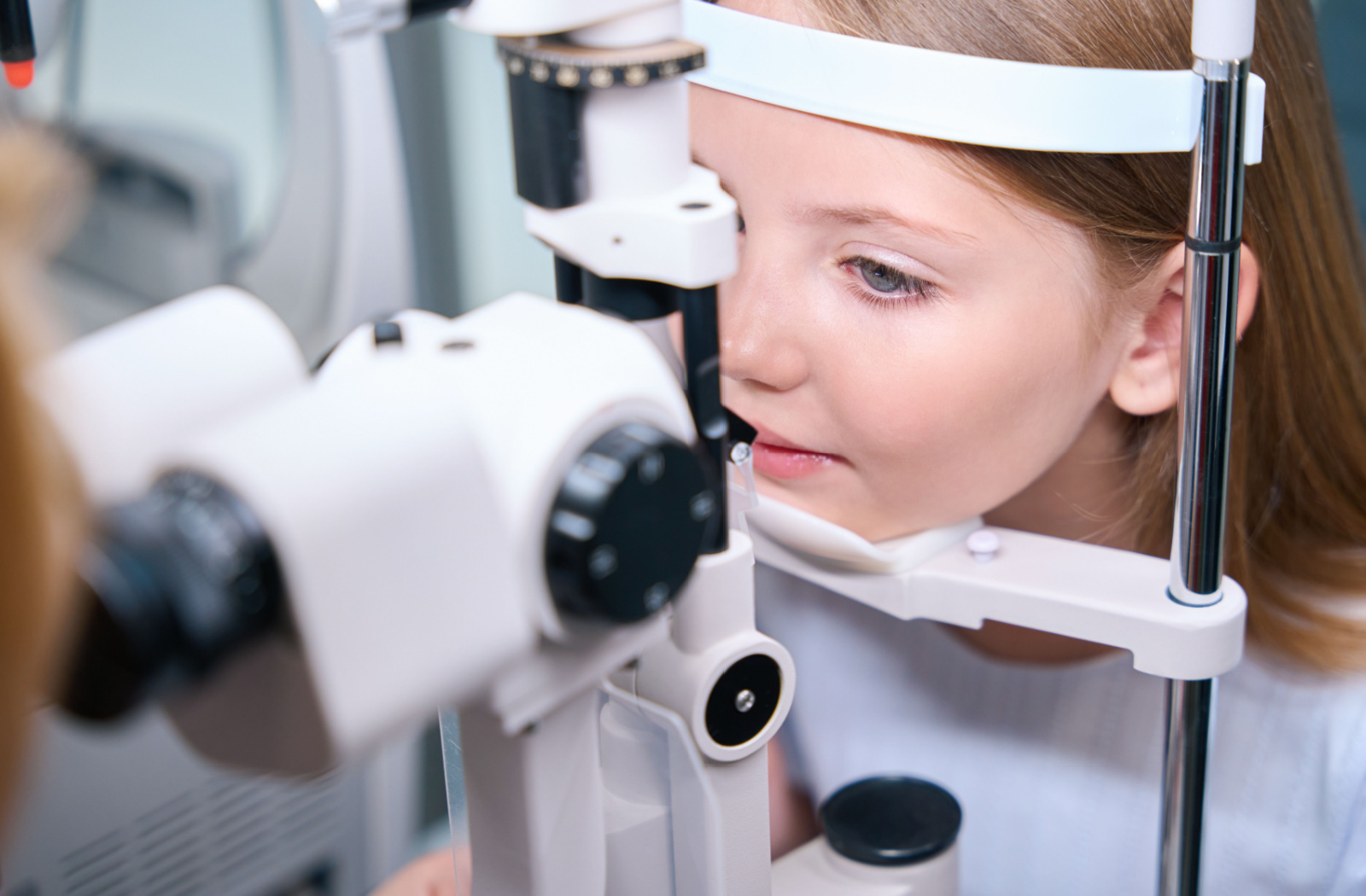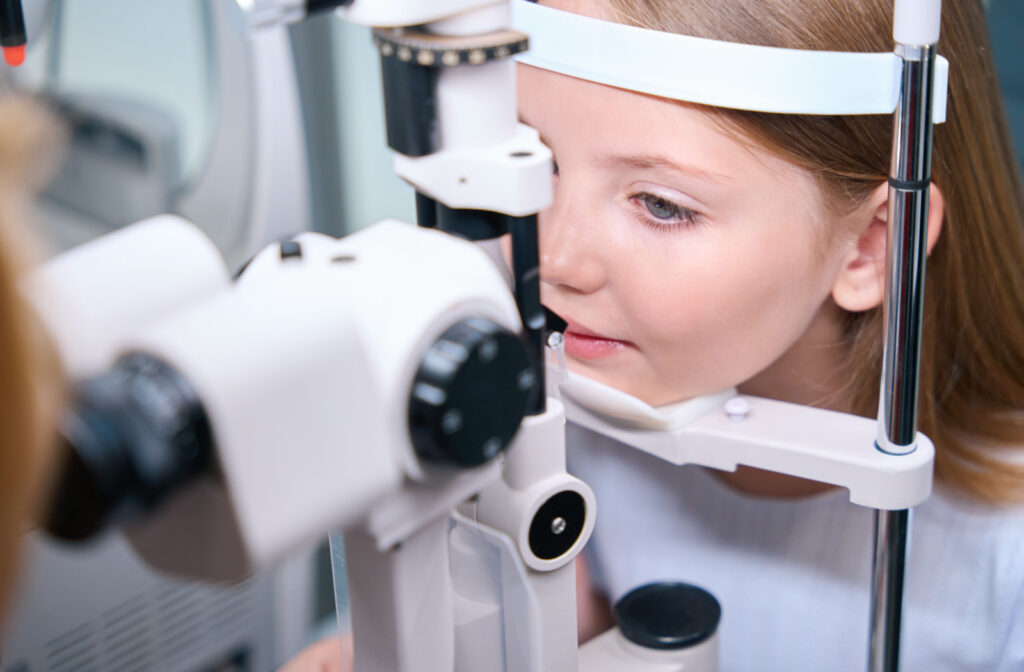If you’re a parent and you live with vision problems—whether nearsightedness, farsightedness, or astigmatism—you’re likely worried about your child’s vision too. But don’t worry! With regularly scheduled children’s eye exams, you can keep a close eye on your child’s vision and take steps to keep it clear. So how often should your child get an eye exam?
You should take your child to visit your optometrist at least once a year once they begin school. This gives an eye care professional the chance to monitor their vision and address any changes to help keep your child’s eyes healthy and strong.
Why Are Eye Exams Important?
An eye exam isn’t just about making sure your child can clearly see the chalkboard—it’s about so much more. These exams are an essential part of catching any potential problems early, where they’re often more treatable.
This can make a world of difference in treating your child’s vision. And if they need glasses, regular eye exams let you keep their prescription updated. Most of your child’s learning is vision-based, so by keeping things up-to-date, you’re giving them a better chance of succeeding in school.
This becomes especially important if you have a family history of myopia, hyperopia, or astigmatism. These refractive errors have a genetic component—so if you or your partner have one, your child is much more likely to develop it as well. Your child only gets one set of eyes, so it’s important to do what you can to keep them healthy and strong!
When Should a Child Get Their First Eye Exam?
When you’re planning out your calendar, don’t forget to book in children’s eye exams. If you don’t know where to start, you can follow a few guidelines. Your child should see an optometrist:
- At least once during infancy
- Another time before kindergarten or right before they begin school
- At least once a year during school
In other words: you should try to schedule the first exam when your child is between 6-12 months old. Then again around the age of 3-4, and annually thereafter. This lets a trained eye care professional monitor their vision and address any potential changes.
How to Tell if Your Child Has Vision Problems
Your child’s eyes are always going to be changing as they grow, and they might not know how to communicate that they’re having problems with their vision. Maybe they’re having a hard time seeing the blackboard at school, or reading a book causes too much eye strain. So as a parent, it’s important to watch out for signs of vision problems between eye exams.
Try to keep an eye out for:
- Squinting
- Sitting too close to TVs and other screens
- Reading problems
- Complaints about frequent headaches
- Frequently rubbing eyes
- Difficulty paying attention
If you notice these or any other unusual behaviors, it might be time for a check-up.
Tips for Maintaining Your Child’s Vision
While your child is growing, there are several things you can do to promote better eye health. Try to encourage your child to take regular breaks from screens—try to follow the 20-20-20 rule. Every 20 minutes, try to get them to focus on something 20 feet away for 20 seconds.
This can help stop their eyes from adjusting to focusing on something so close. And if they need glasses, encourage them to wear them! Keep the lenses clean and the prescription up-to-date.

Don’t forget about a balanced diet! The eyes are an extremely complex system, and they’ll need a healthy balance of nutrients to remain healthy. Make sure your child eats plenty of fruits and vegetables, and anything rich in omega-3 fatty acids can help a lot as well. And of course, include your regular visits to the optometrist!
Book Your Next Eye Exam
Regular eye exams play an important role in keeping your child’s vision clear. So if it’s been a while since your child last saw an optometrist, or they’re exhibiting any signs of a vision issue, come visit our team at Envision Eye Care. We’re here to help keep your child’s eyes healthy and strong, so book an appointment with us today! We’re looking forward to seeing you.



